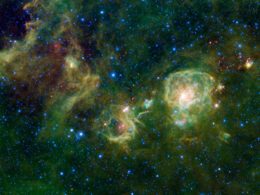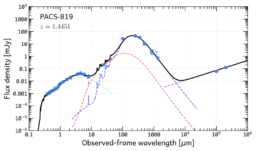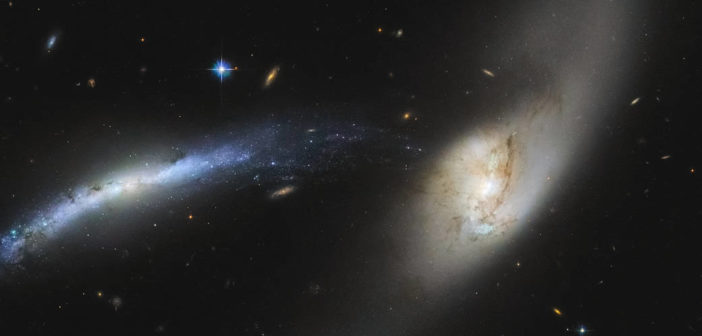Stars are forming in galaxies near and far, fueled by massive clouds of gas. What can carbon monoxide — a familiar but dangerous gas on Earth — tell us about star formation in distant galaxies?
Fuel for Star Formation

Molecular clouds, like those in the Vela Molecular Cloud Ridge complex pictured here, are the sites of star formation. [NASA/JPL-Caltech/UCLA]
The photons emitted by molecules like carbon monoxide make up just one small part of the light we observe from other galaxies. Most of the interstellar radiation field comes from the combined photons from stars, gas, and dust (as well as any background radiation that has passed through the galaxy). The interstellar radiation field contains a huge amount of information about a galaxy’s reservoir of star-forming gas — if we can find a way to extract it.
Gathering Galaxies
In today’s article, a team led by Daizhong Liu (Max Planck Institute for Astronomy, Germany) explores the relationship between emissions from carbon monoxide, the interstellar radiation field, and factors that determine the rate of star formation.

An example of the team’s fitting routine, as applied to observations (blue circles) of distant galaxy PACS-819. The best-fitting model of the galaxy’s spectra energy distribution (black line) is composed of several emission components: stellar (cyan), warm dust (red), cold dust (blue), and radio (purple). [Adapted from Liu et al. 2021]
In order to understand how emission lines are related to a galaxy’s star-forming capabilities, the authors modeled each galaxy’s spectral energy distribution — the amount of energy emitted at each wavelength — and the strength of its carbon monoxide emission lines. The spectral energy distribution modeling determined the intensity of the interstellar radiation field, while the carbon monoxide modeling demonstrated how the relative strength of the molecule’s emission lines depend on the density and temperature of the surrounding molecular cloud.
A New Item in Our Toolkit

Spectral lines from carbon monoxide molecules may serve as a useful probe of starburst galaxies, like M82, which have unusually high rates of star formation. [NASA, ESA and the Hubble Heritage Team (STScI/AURA)]
While the correlation between radiation field intensity and temperature was linear, the correlation with density was not. This implies that while the star-forming rate may increase smoothly with density and temperature in typical star-forming galaxies, galaxies experiencing bursts of star formation while merging with another galaxy might show huge increases in density without a large increase in temperature. The authors hope that studying carbon monoxide will allow us to probe the star-forming conditions in distant galaxies — an impressive feat for a humble molecule!
Citation
“CO Excitation, Molecular Gas Density, and Interstellar Radiation Field in Local and High-redshift Galaxies,” Daizhong Liu et al 2021 ApJ 909 156. doi:10.3847/1538-4357/abd801

